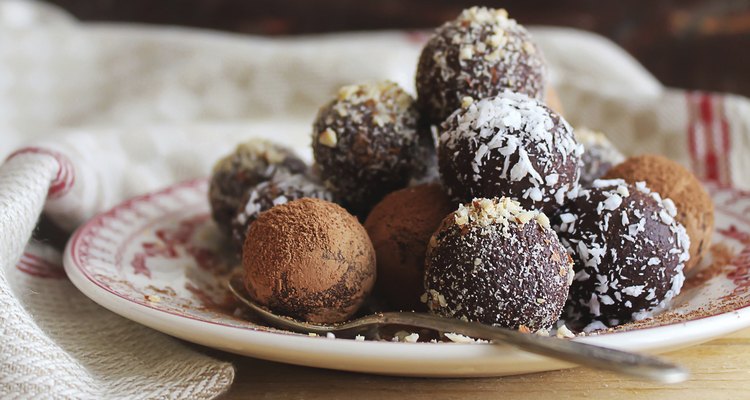
Анна Курзаева/iStock/Getty Images
Yearly, people eat about three million tons of cacao beans worldwide as chocolate, according to the U.S. Department of Agriculture. The Aztecs of Mexico made a bitter drink called “chocolatl” from cacao beans, maize and water. Today, cacao beans, milk solids and sucrose make up most chocolate foods. A variety of stimulants other than caffeine comprise dark chocolate, white chocolate, milk chocolate, cocoa or chocolate flavorings in candy, desserts and drinks.
Sugar
Sugar (in combination with milk fat) in chocolate produces an explosion of endorphins and serotonin neurotransmitters in the brain, according to chocolate-chemistry.com. Sometimes referred to as a “sugar high,” the combination can be a mood elevator.
Theobromine
Theobromine is an ingredient in chocolate that can stimulate a person, although it doesn’t affect the central nervous system like caffeine. Theobromine is about one-tenth the strength of caffeine and is a diuretic, and because of its ability to relax the bronchial muscles, can be used as a cough medicine. Theobromine can be toxic to dogs and cats.
Phenylethylamine
Phenylethylamine is another stimulant found in chocolate. According to the chocolate-chemistry.com, it has a similar chemistry to amphetamines. It releases dopamine in the brain at the mesolimbic pleasure center.
Anandamide
Anandamide can produce psychoactive stimulation as an endogenous cannabinoid, according to chocolate.org. However, it is present in such small amounts in chocolate that you would have to eat several pounds of chocolate to get any psychoactive stimulation. The Canadian Medical Association states that endogenous cannabinoids such as anandamide can have an analgesic (pain killing) effect.
Related Articles
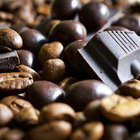
Number of Calories in Dark ...

Which Country Produces the Most ...

How Does Chocolate Affect the Nervous ...

Chocolate and Vitamins

Bad Effects of Chocolate

Nutrition in Carob Vs. Chocolate

Caffeine in Chocolate Versus Coffee

How Exercise Increases Hair Growth

Anise Seed Cautions and Side Effects

What Vitamin Are You Missing If You ...

How Many Types of Chocolate Are There?
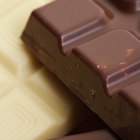
The Antioxidant Levels of Cacao
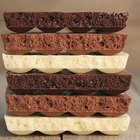
Foods Containing Theobromine
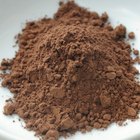
Nutritional Facts of Pure Cocoa

List of Foods Containing High Amounts ...
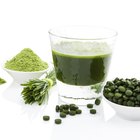
What Are the Benefits of Kyo-Green?

The Calories in an Ice Cream Sandwich

Description & Characteristics of ...
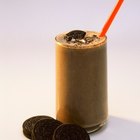
Chocolate Milk and Weight Loss

Chamomile & Aloe Skin Care
References
Writer Bio
Richard Nilsen writes poetry, fiction, features and news stories in upstate New York. He was an emergency mental-health consultant for 20 years and directed a mentoring agency for a decade. Nilsen is a black-fly control technician in the Adirondack Park, where he enjoys hiking, biking and boating.
Photo Credits
Анна Курзаева/iStock/Getty Images